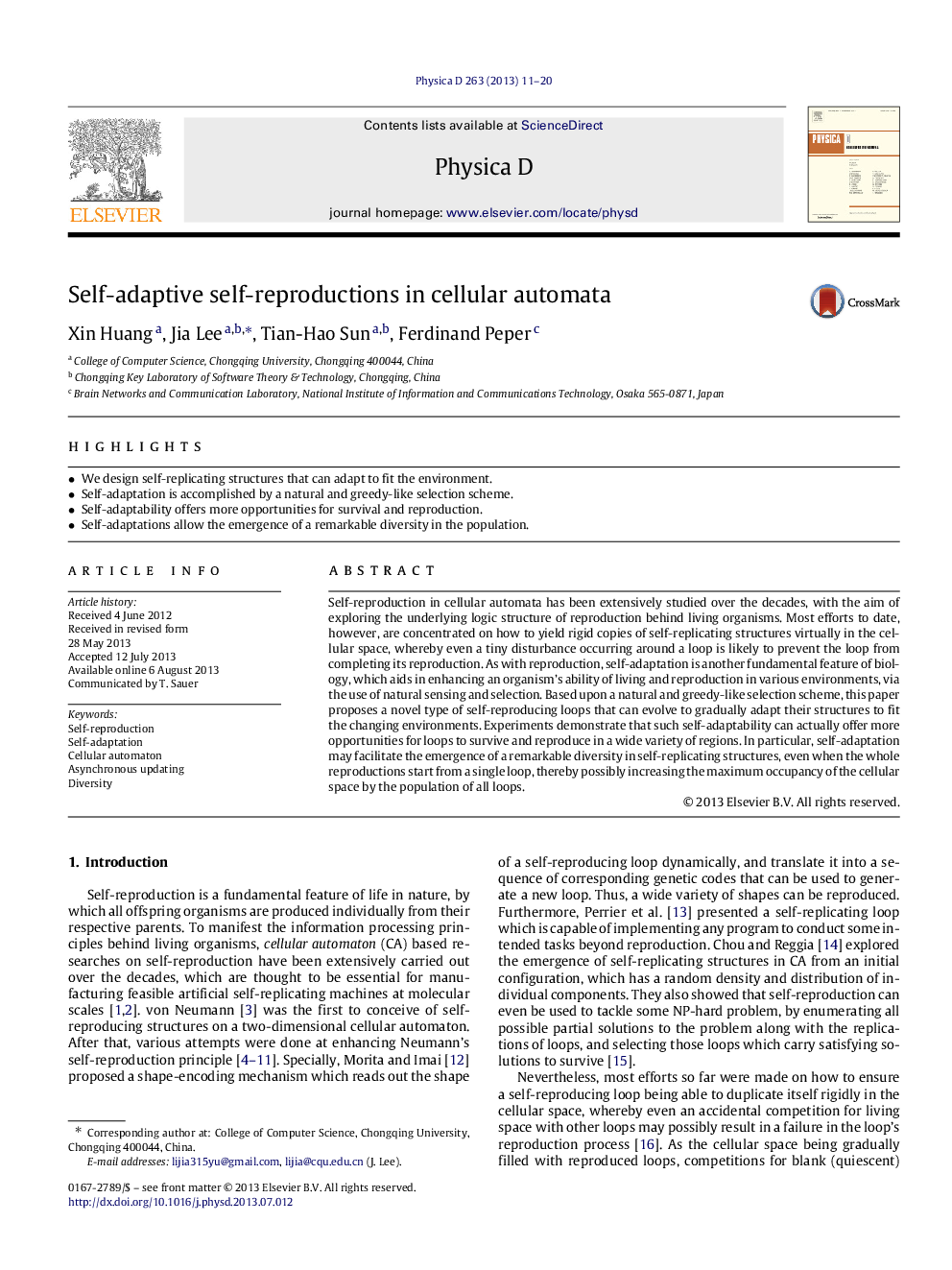| کد مقاله | کد نشریه | سال انتشار | مقاله انگلیسی | نسخه تمام متن |
|---|---|---|---|---|
| 1895577 | 1534041 | 2013 | 10 صفحه PDF | دانلود رایگان |

• We design self-replicating structures that can adapt to fit the environment.
• Self-adaptation is accomplished by a natural and greedy-like selection scheme.
• Self-adaptability offers more opportunities for survival and reproduction.
• Self-adaptations allow the emergence of a remarkable diversity in the population.
Self-reproduction in cellular automata has been extensively studied over the decades, with the aim of exploring the underlying logic structure of reproduction behind living organisms. Most efforts to date, however, are concentrated on how to yield rigid copies of self-replicating structures virtually in the cellular space, whereby even a tiny disturbance occurring around a loop is likely to prevent the loop from completing its reproduction. As with reproduction, self-adaptation is another fundamental feature of biology, which aids in enhancing an organism’s ability of living and reproduction in various environments, via the use of natural sensing and selection. Based upon a natural and greedy-like selection scheme, this paper proposes a novel type of self-reproducing loops that can evolve to gradually adapt their structures to fit the changing environments. Experiments demonstrate that such self-adaptability can actually offer more opportunities for loops to survive and reproduce in a wide variety of regions. In particular, self-adaptation may facilitate the emergence of a remarkable diversity in self-replicating structures, even when the whole reproductions start from a single loop, thereby possibly increasing the maximum occupancy of the cellular space by the population of all loops.
Journal: Physica D: Nonlinear Phenomena - Volume 263, 15 November 2013, Pages 11–20